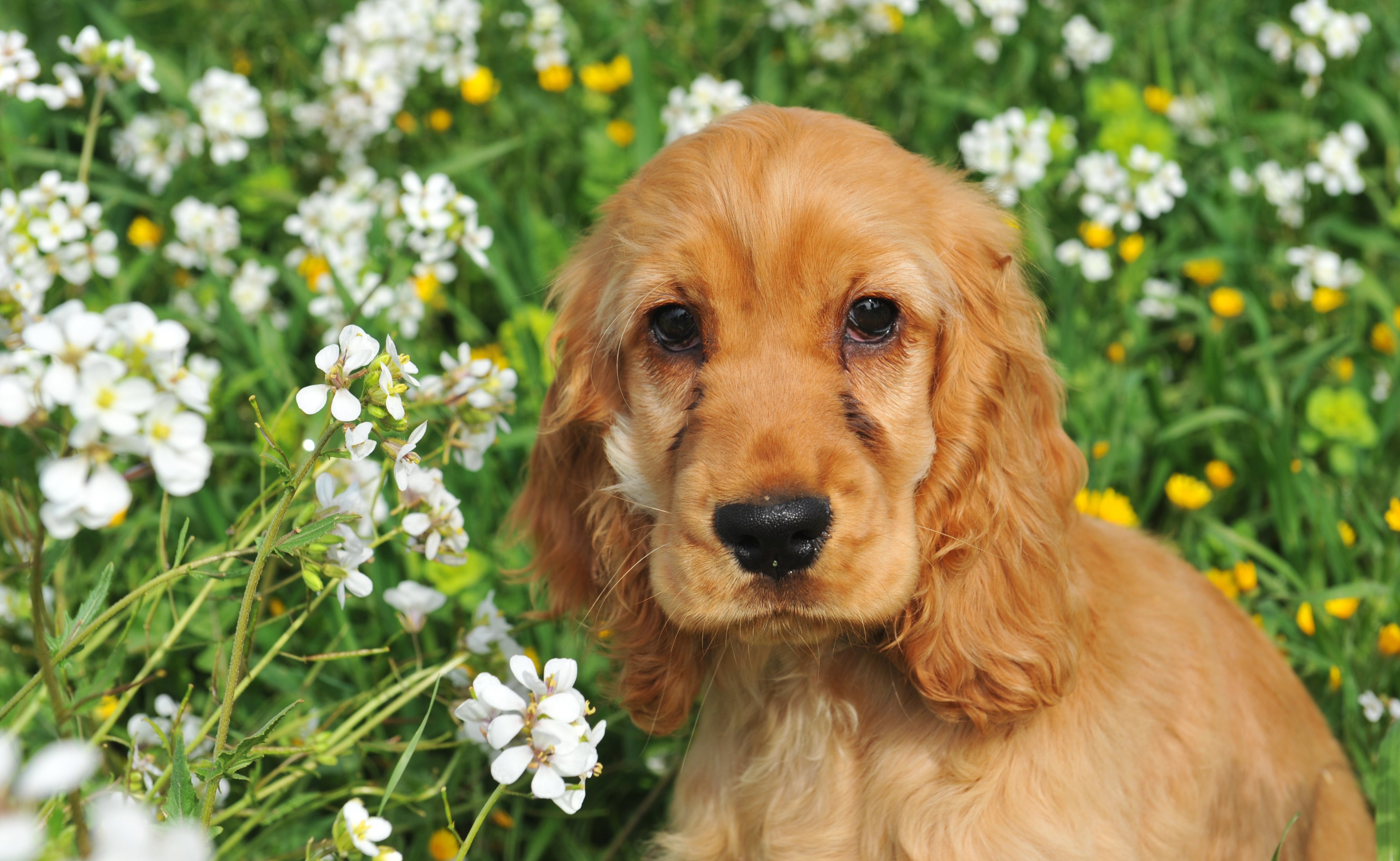English Cocker Spaniel
Active, sweet, and medium-sized, English Cocker Spaniels make excellent family pets. They are slightly taller than long, compact, and have a powerful gait that helps them be effortless and speedy fast on foot. Their silky coat is medium in length and can be flat or wavy with feathering around their ears, chest, and legs. The English Cocker Spaniel breed is always on the go, clever, and curious. They are happy tail-waggers, always attached to their owner's side.
Breed characteristics carousel
Learn More
Need to Know
- Dog suitable for owners with some experience
- Extra training required
- Enjoys vigorous walks
- Can be left occasionally with training
- Medium dog
- Some drool
- Requires frequent grooming
- Chatty and vocal dog
- Barks and alerts to visitors/anything unusual
- Generally friendly with other dogs
- Gets along with other pets with training
- May need additional supervision to live with children
- Need a large yard, either in suburban or rural areas
- AKC Registered Breed

Personality
English Cocker Spaniels are cheerful and active dogs who love nothing more than to be around their human companions. They are eager to please their owners and are deeply devoted and loyal to them, although they can also be sensitive. These social butterflies make great family pets as they get along well with kids and other animals.
English Cocker Spaniel dogs are the most popular of the Spaniel breeds. Cockers are smaller and faster than other Spaniels and could more easily make their way through dense underbrush to flush out game that other Spaniels were too large to get. English and American Cocker Spaniels were considered the same breed until 1946. While the American Cocker Spaniel is more popular in the U.S., the English Cocker Spaniel breed enjoys more global popularity.
English Cocker Spaniel dogs need fit and active owners who can keep up with them and match their energy levels. A calm presence is also great as it helps balance out the Cocker Spaniel's busybody nature. Rural settings are best for these happy-go-lucky dogs, but they can also live in the suburbs if they get the large amount of exercise they need.
Expending energy by walking, running, training, or playing games is the name of the game when it comes to English Cocker Spaniels. Whatever the activity is, they want to be first in line to do it, especially if it involves off-leash running.
Rural areas are ideal for English Cocker Spaniels so that they can get the exercise they need. The suburbs also work, so long as the dogs get the exercise they need to stimulate them properly.
A brushing every few days is required to keep an English Cocker Spaniel’s coat free of mats and tangles. They should also be trimmed every month either by their owner or a professional. Their ears need to be checked weekly for debris and excess wax.
English Cocker Spaniel dogs were bred to be rule followers in the field. They are eager to please because of this, and love being around people. So long as positive methods and reinforcement are used, they will enjoy training, especially as it’s a way to bond with their owners. On the other hand, these sensitive dogs will react poorly to negative or harsh ways of training.
If you have an active household with older children or no children, the English Cocker Spaniel will thrive. They get along well with smaller children, but the needs of small children might make it hard to meet the needs of an English Cocker Spaniel dog.
The cost of an English Cocker Spaniel from a breeder is significantly more than the cost of adopting one from a local shelter or rescue. The adoption fee usually covers additional items such as spaying or neutering, vaccines, and microchipping.

Learn more about feeding and caring for your English Cocker Spaniel on Purina.
Did You Know?
- There are two different types of Cocker Spaniels: the English and the American. Each breed has subtle differences. The English Cocker Spaniel tends to be taller than they are long, while the American Cocker Spaniel is the opposite.
- A Cocker Spaniel named Tangle was the first cancer-detecting dog and had an accuracy rate of 80%.
- Boat shoes were inspired by the Cocker Spaniel’s paw pads. Paul Sperry witnessed his dog run on ice with ease and mimicked the slip-resistant anatomy of the dog in the shoe.
- Lady from Lady and the Tramp was a Cocker Spaniel.
- George Clooney has a Cocker Spaniel named Einstein, and the Prince and Princess of Wales have one named Lupo.

